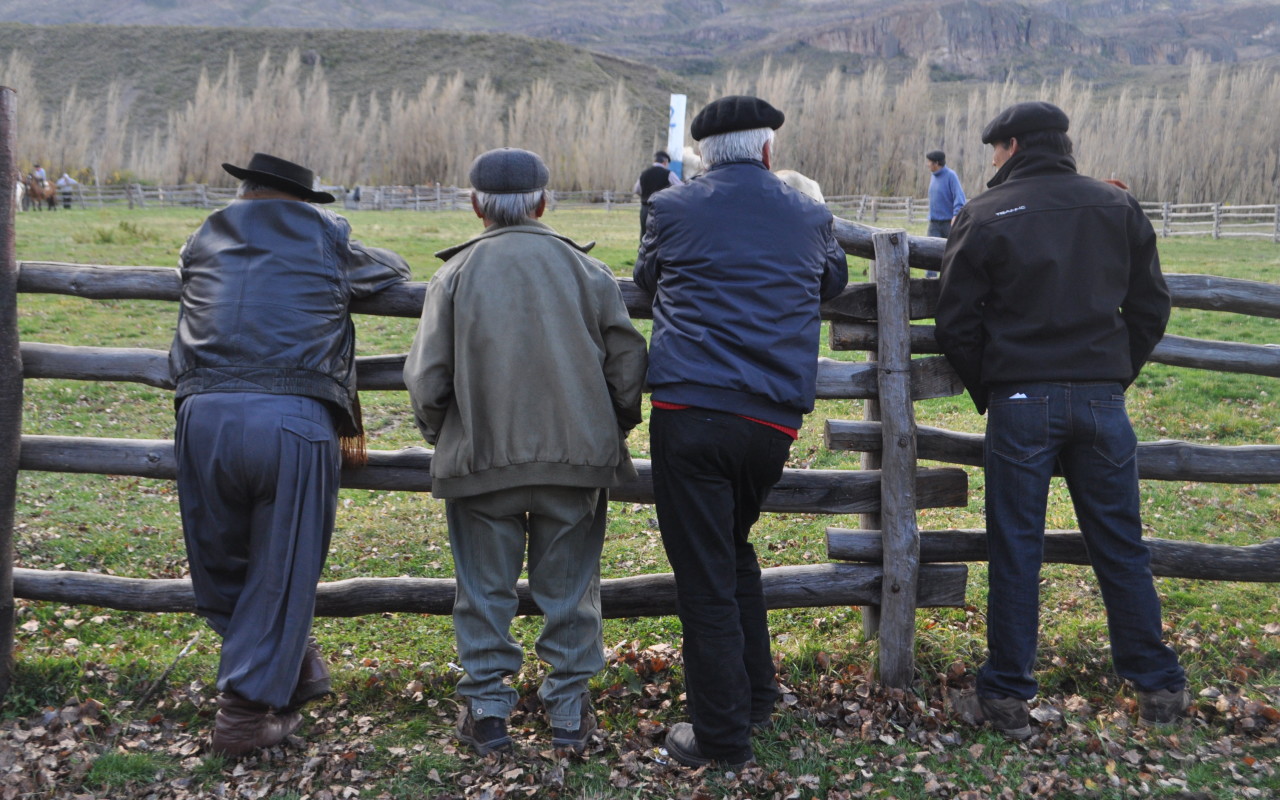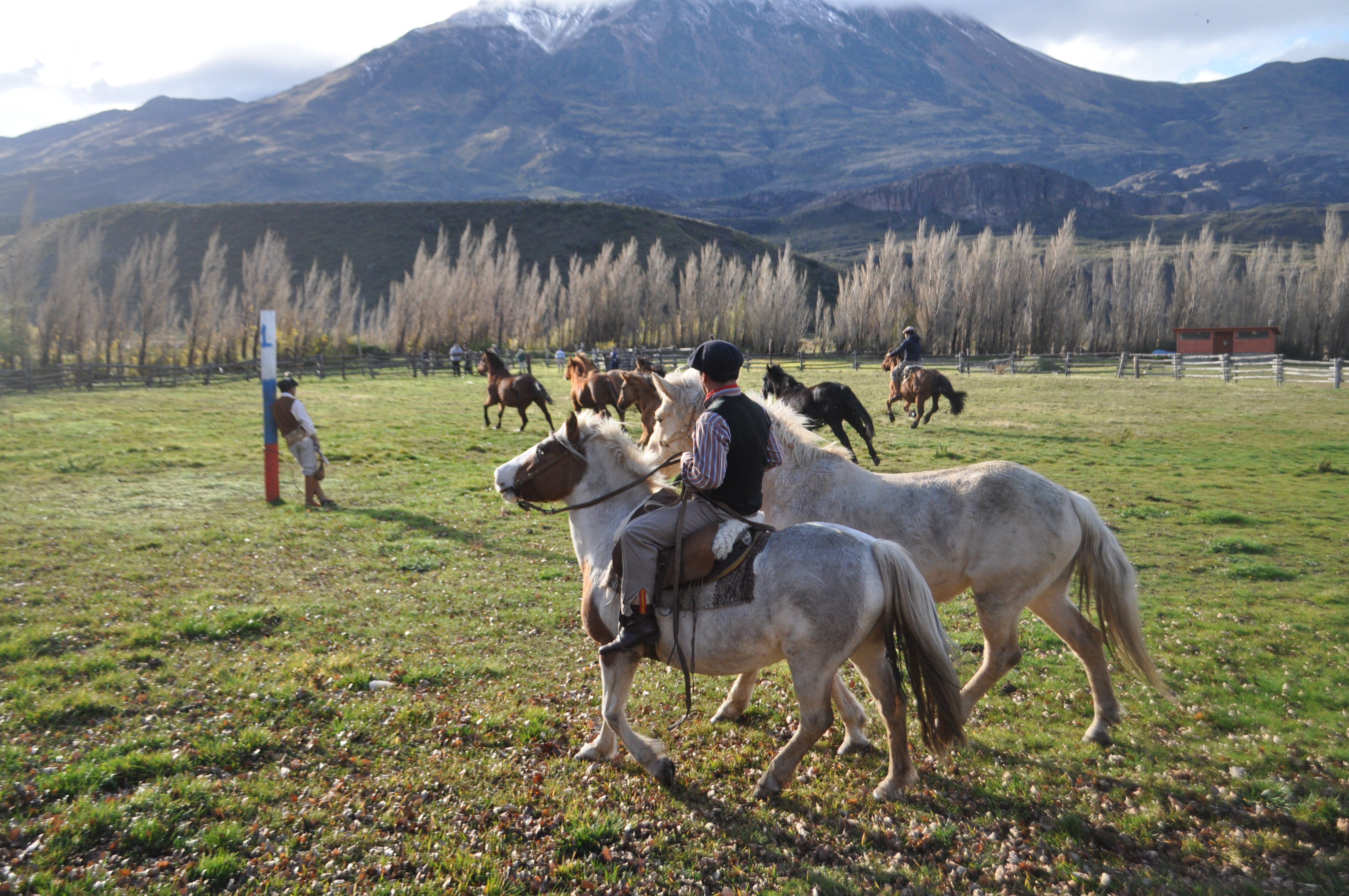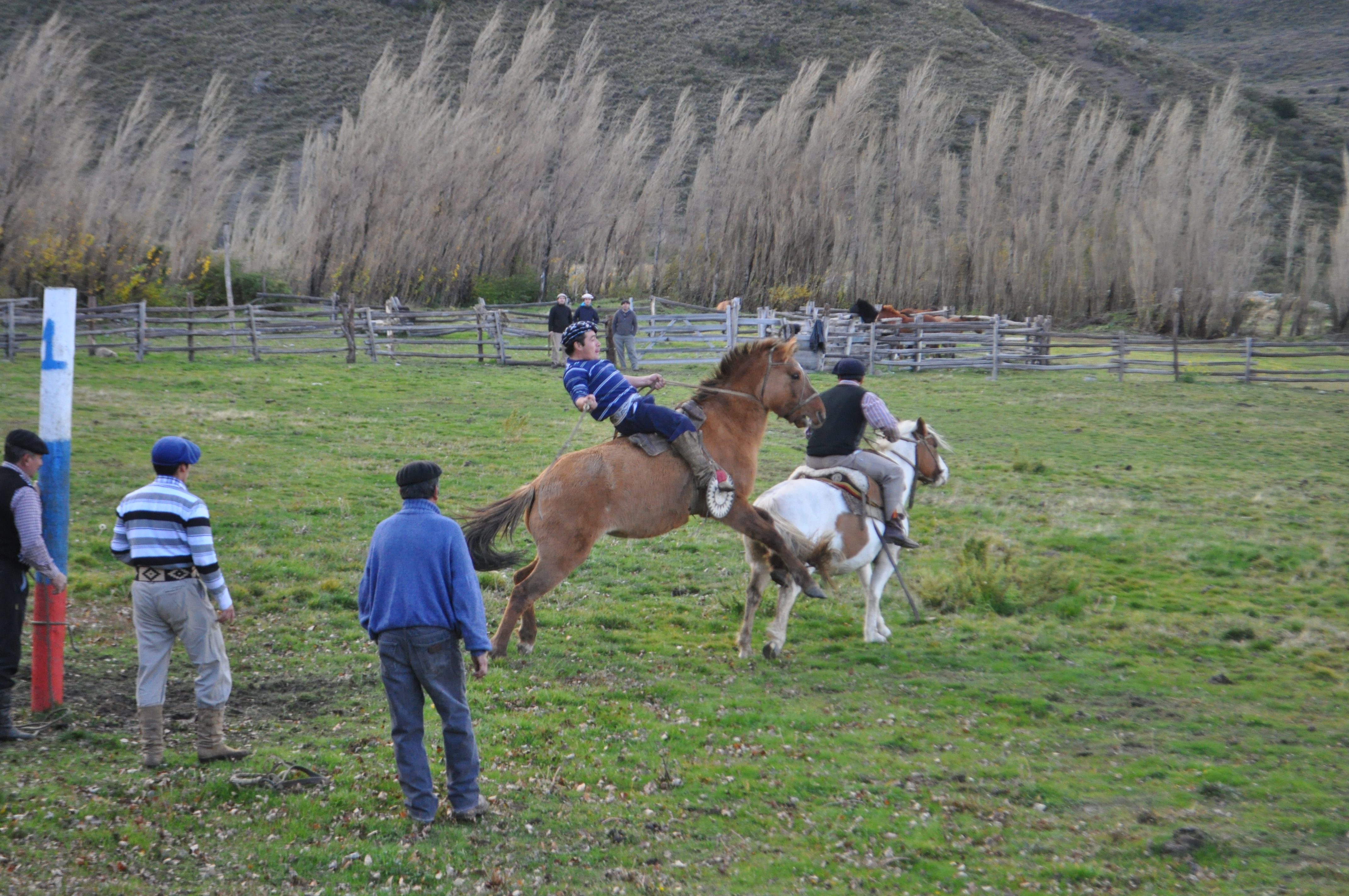THE TRADITIONAL GAUCHO HORSEBACK RIDERS (JINETEADAS) OF PATAGONIA

It's a total party in Puerto Ibáñez, in the Aysén region. During some days of the summer, this peaceful coastal town located on the northern shore of Lake General Carrera moves to the rhythm of guitars, payas and chamamé, a traditional style of music and dance whose origins are Argentine, but which has gained popularity among the Patagonian community in southern Chile.
And in mid-January, the International Rider Festival takes place, an adrenaline-filled competition sport whose objective is for a rider to mount and dominate an indomitable colt for several seconds. At this time the excitement is total among the public, which fills the galleries while an announcer enthusiastically recounts the event. Each horseback rider also dresses elegantly and as the gaucho tradition dictates: beret, scarf, cotton shirt, vest, sash, panties and boots. We are located behind a type of wooden fence that separates us from the space where the activity will take place and from where we can witness the horseback riding without the danger of being hit by a horse.

PUERTO IBÁÑEZ, CAPITAL OF THE CUSTOMS FESTIVAL
The commune of Puerto Ibáñez has managed to position itself as one of the main destinations to enjoy this traditional festival, which is gaining more and more followers in Patagonia and the country. From the crowd's point of view, the stage shows the riders in the center of a field of grass and dirt in the shape of a circle. Riders ride the horse to the side of a wooden post that is marked with a number.
At that moment, the animal remains calm, but when released the rider must show all his skill and temperance to dominate a “pissed off” colt. From the stands we see how several hit the ground, although they generally get up without difficulty and satisfied with the dressage they have just performed.

CHARACTERISTICS OF THE JINETEADAS
But what do the Patagonian horseback riding consist of? It is an equestrian activity, that is, with the presence of a horse. The rider must stay on top of a colt for between 8 and 14 seconds, which involves extraordinary work of coordination, dexterity, and mental and physical strength. These horses are called “reserved”, since they are very brave and cocky. Beyond the sporting event, the horse riding represents for the inhabitants of Patagonia an image that seeks to portray the culture and folklore traditions of this area of Chile.
The activity is divided into different categories, clean mane, bald pony, southern rump and top-mounted horses, and depending on that, the rider must have more or less strength. For example, on the rump the person should not touch the animal with their hands. No stirrups are used and the rider must hold the reins with one hand and the whip with the other. In the basto with a countertop, meanwhile, you cannot take your feet out of the stirrups or touch the animal with your hands, which is called “charquear.”
It is also called a tropilla, a group of 12 or 15 horses that will be ridden during the horseback riding. In other words, it is a herd of horses that are guided by a gentle mare who is called godmother and are cared for by a herdsman. Generally they are foals with the “same hair”, that is, the same coat color and morphological characteristics. In the latest versions, around 22 troops participated in the Héctor Segovia Cares Horse Rider Field.
WOULD YOU LIKE TO LEARN ABOUT THIS TRADITIONAL DISCIPLINE OF PATAGONIA? WRITE US AT [email protected], AND WE CAN ARRANGE A VISIT. WE ARE 100% A CUSTOMIZED OPERATOR.
Categorías - Events - Party - People - History - Culture - Accesible Heritage